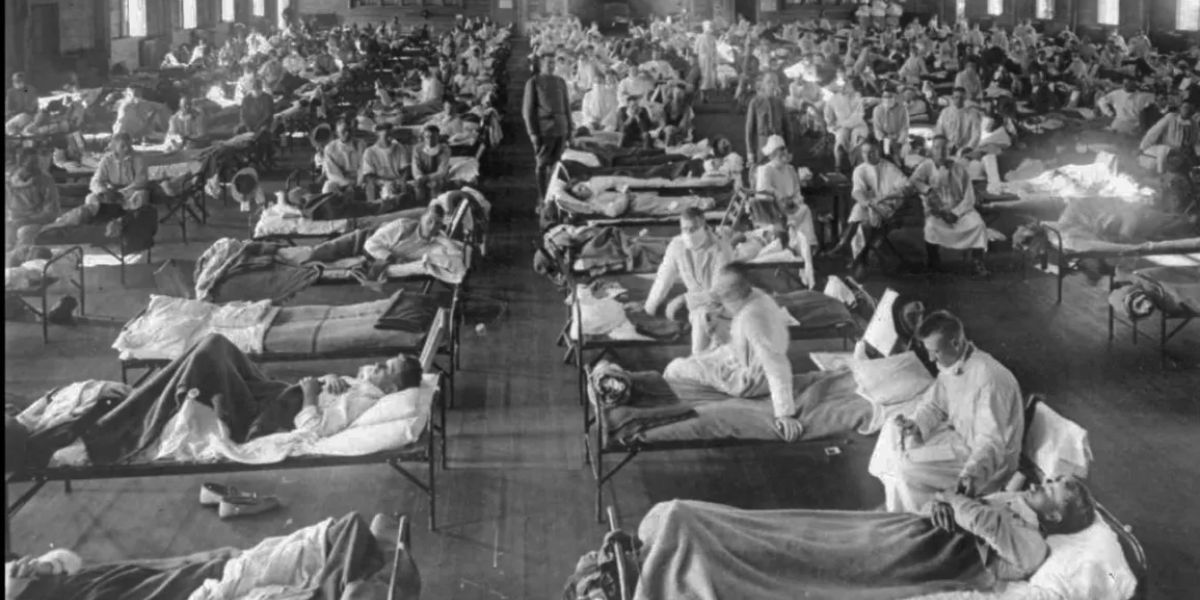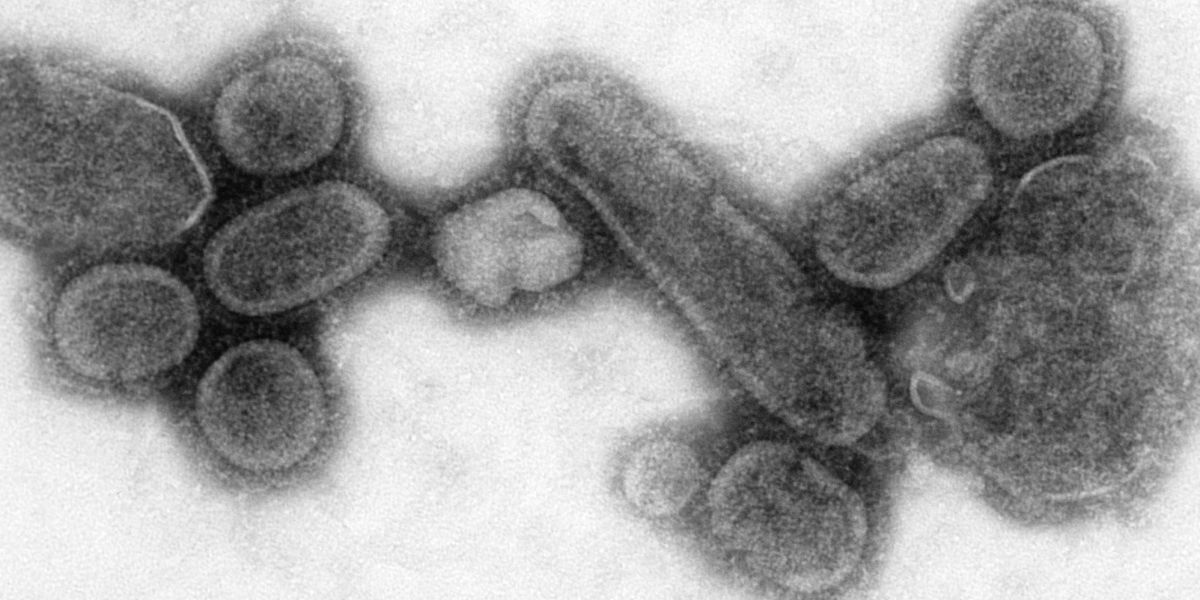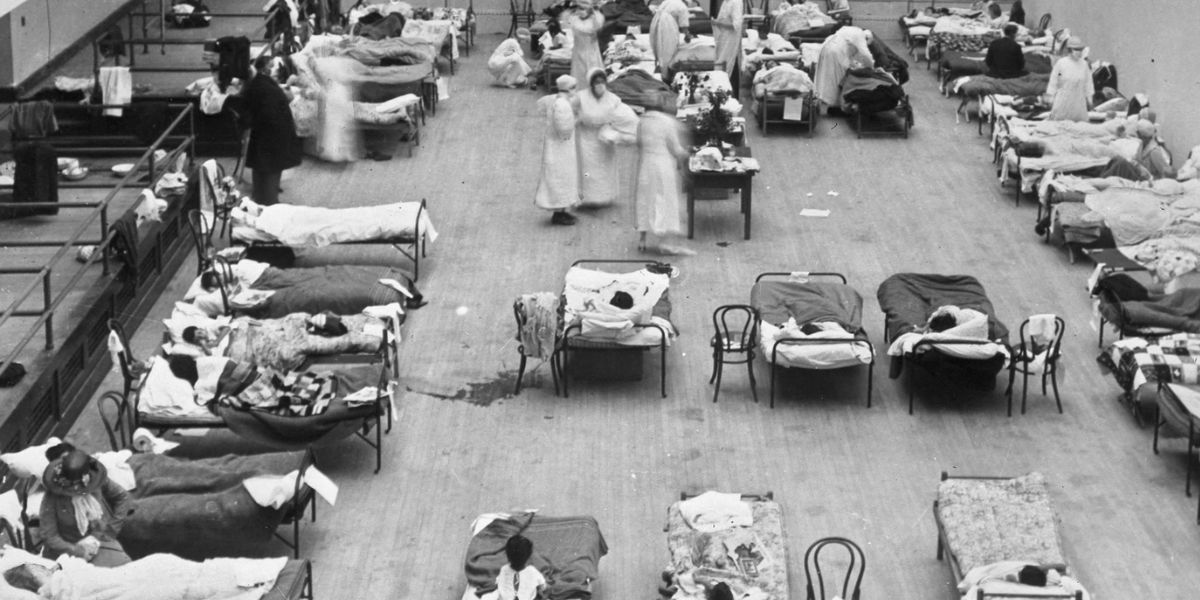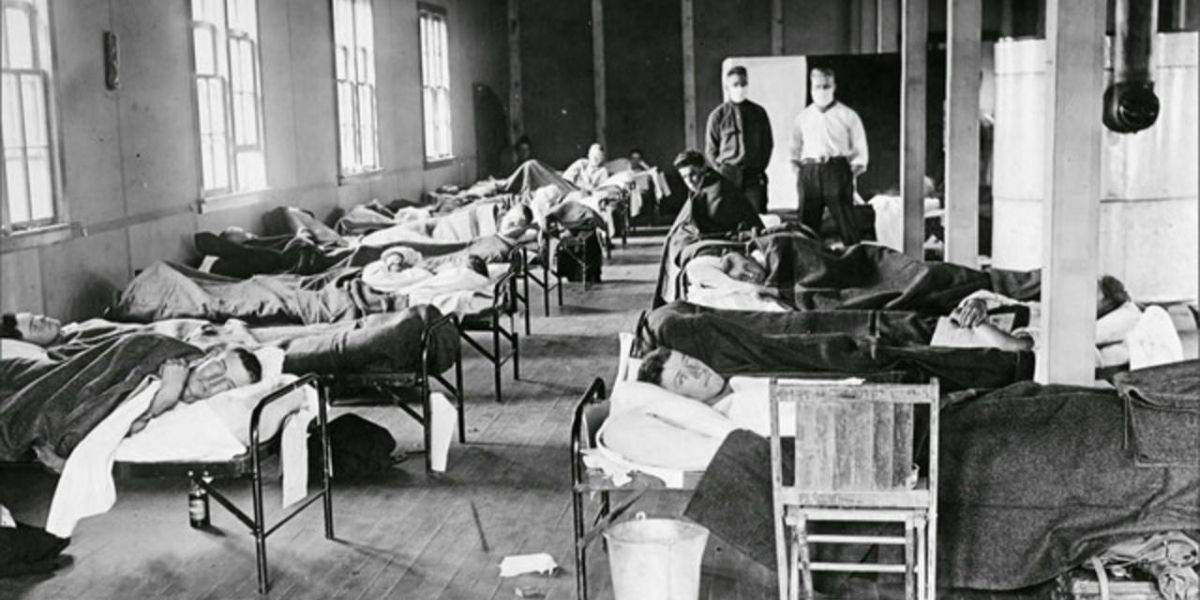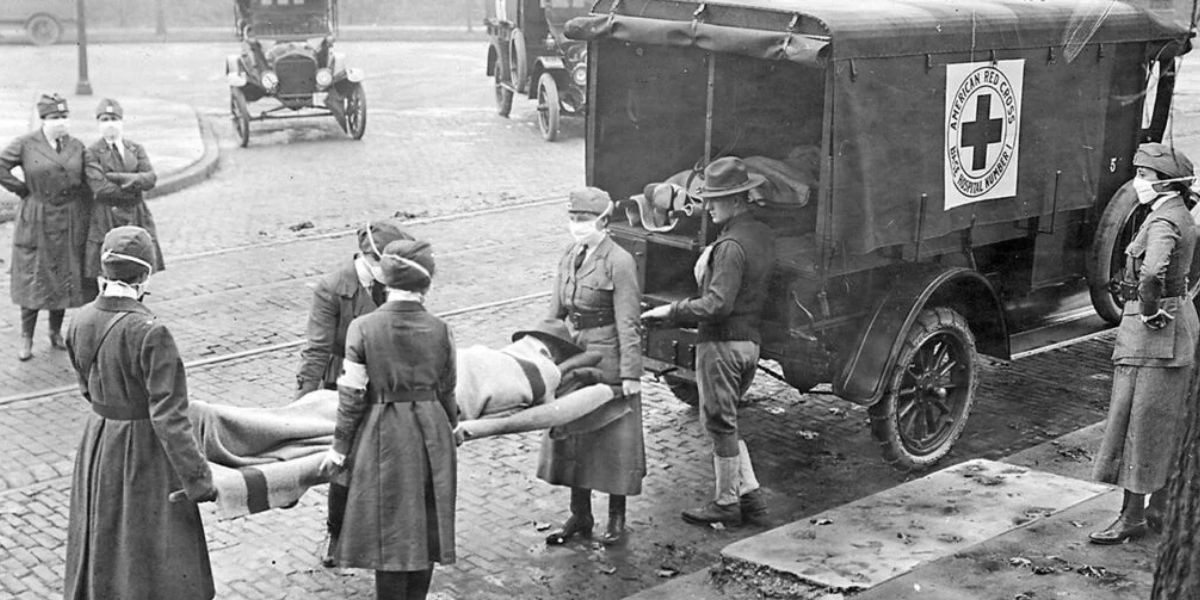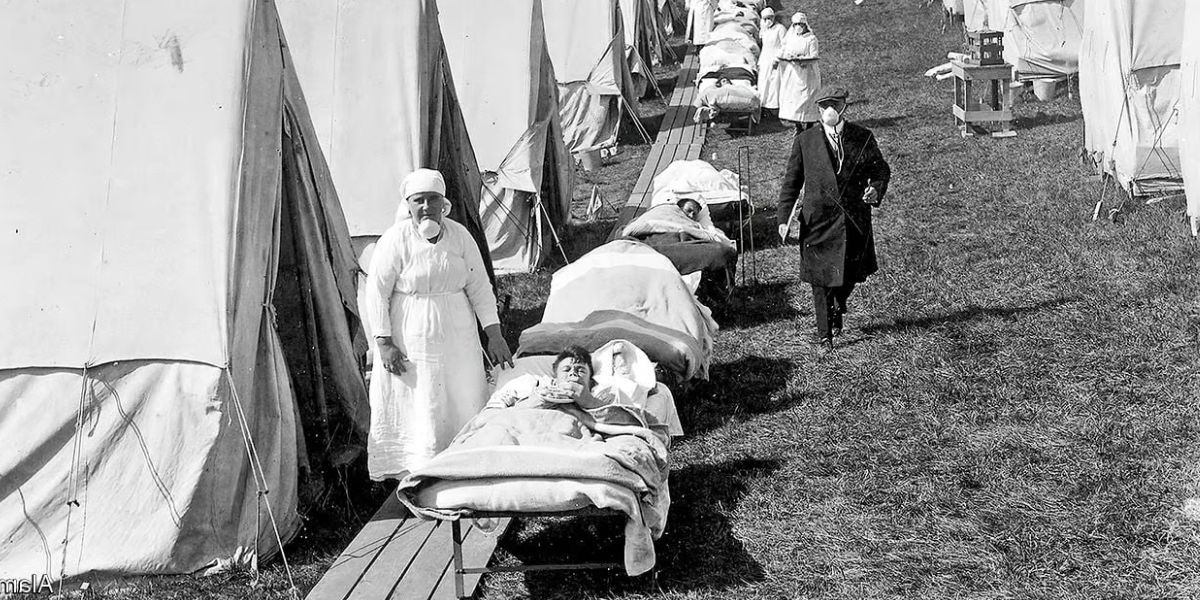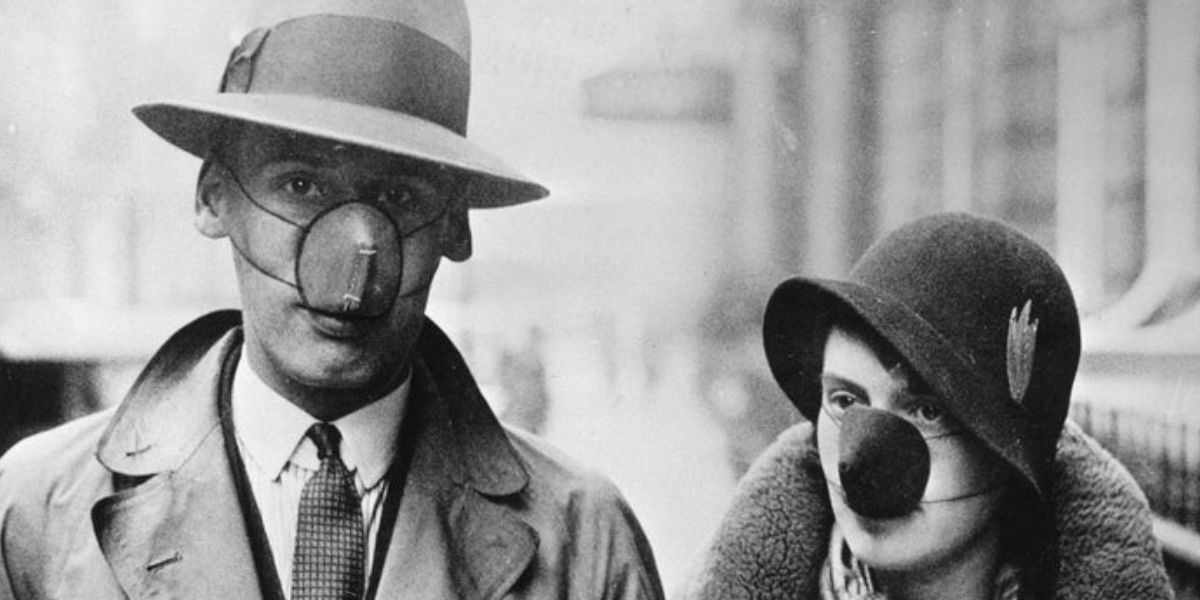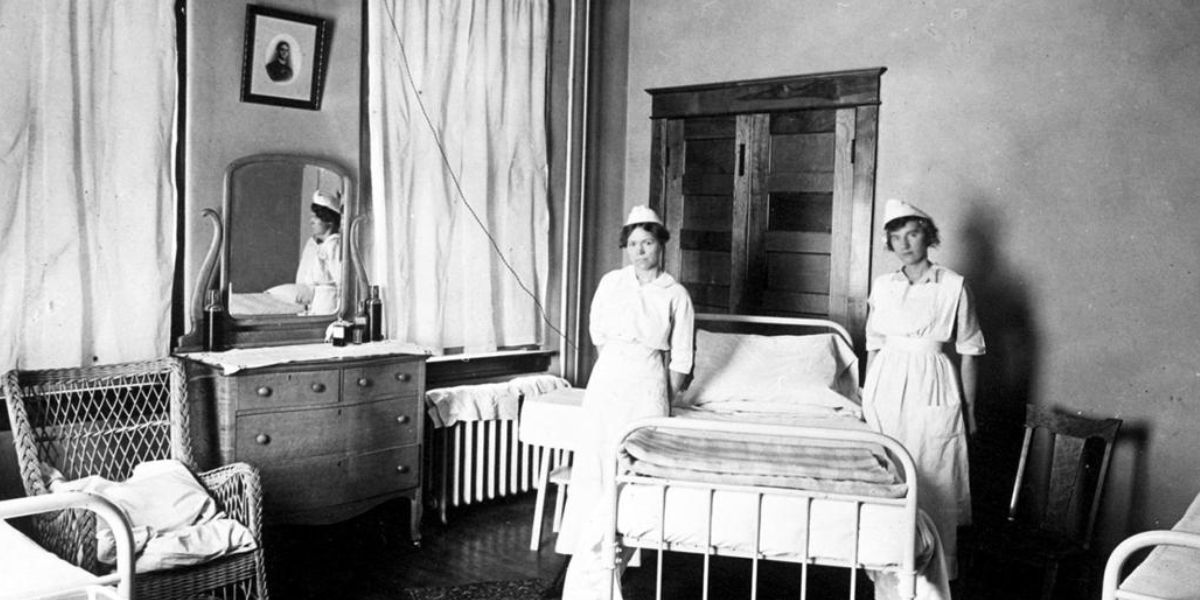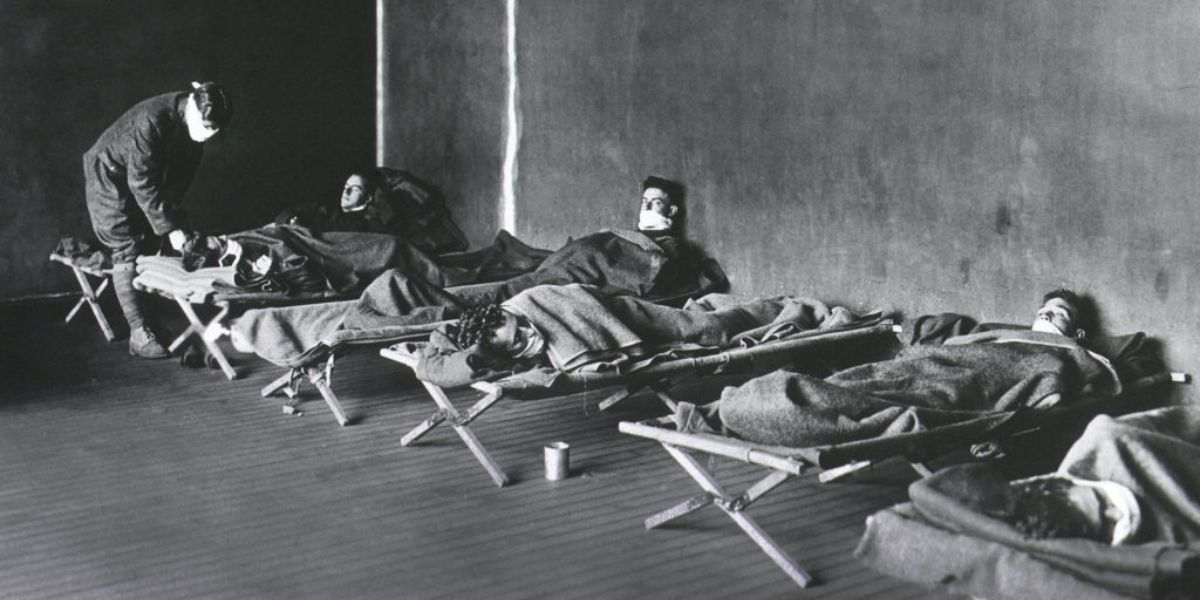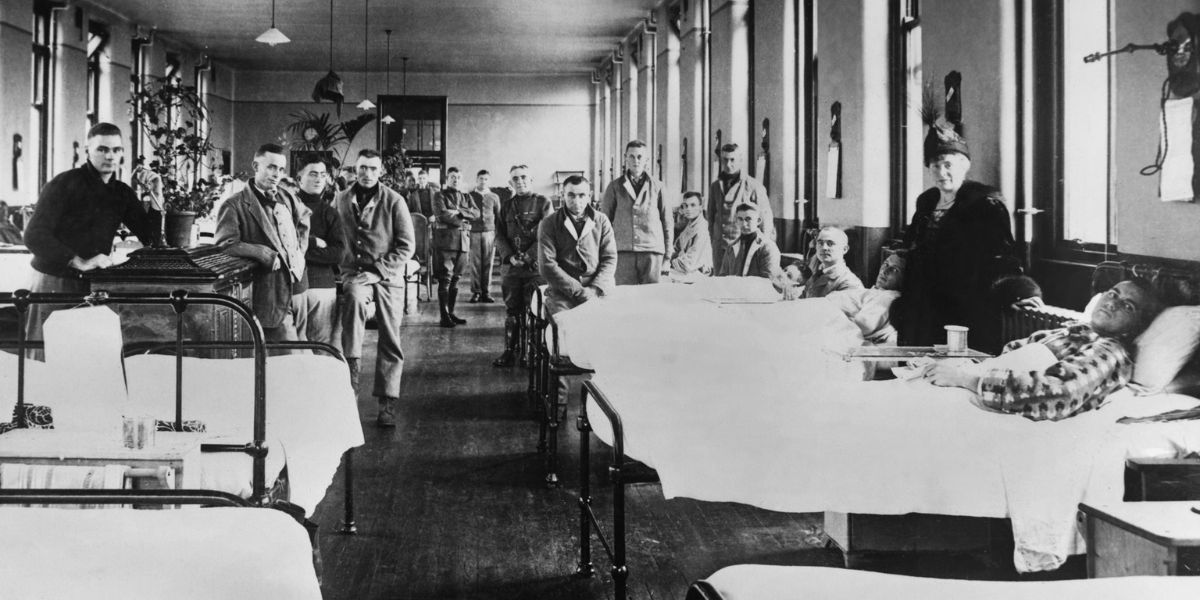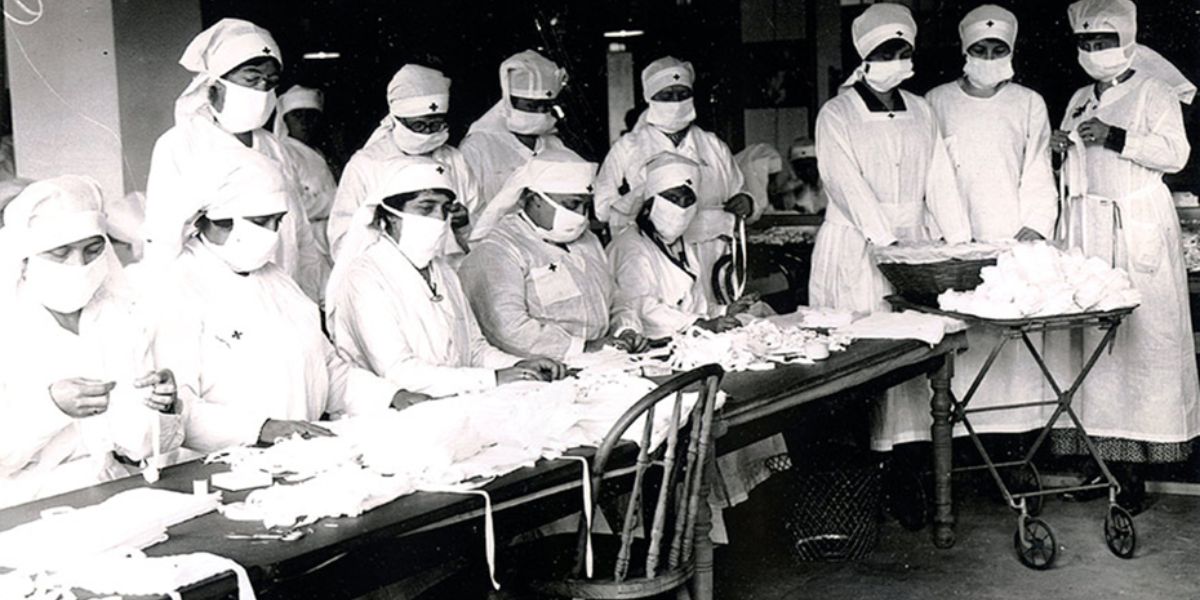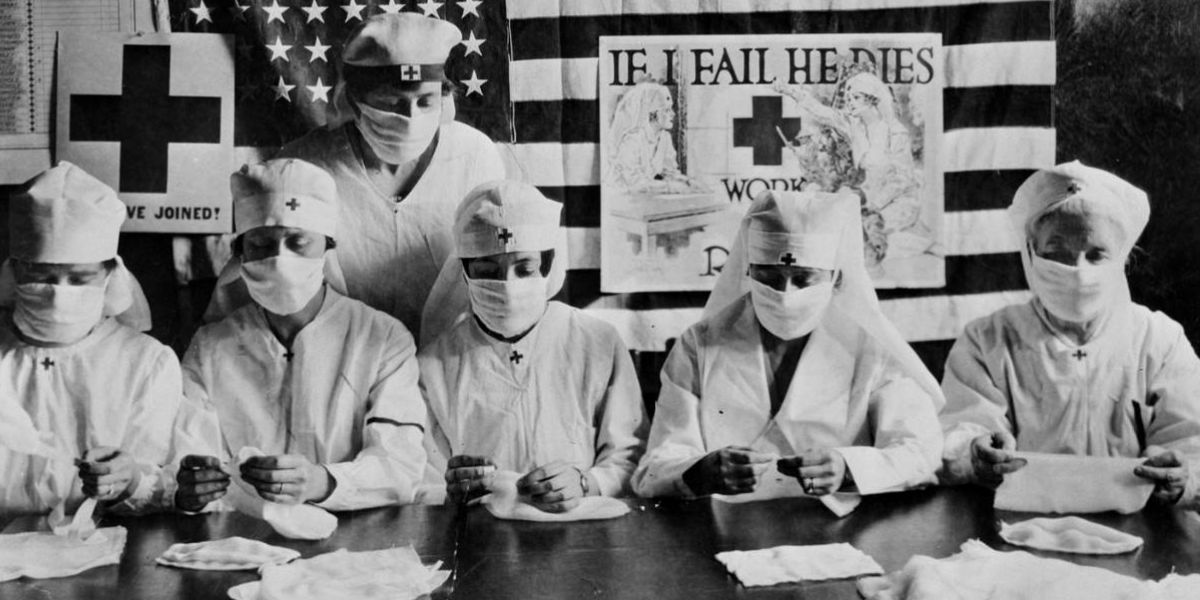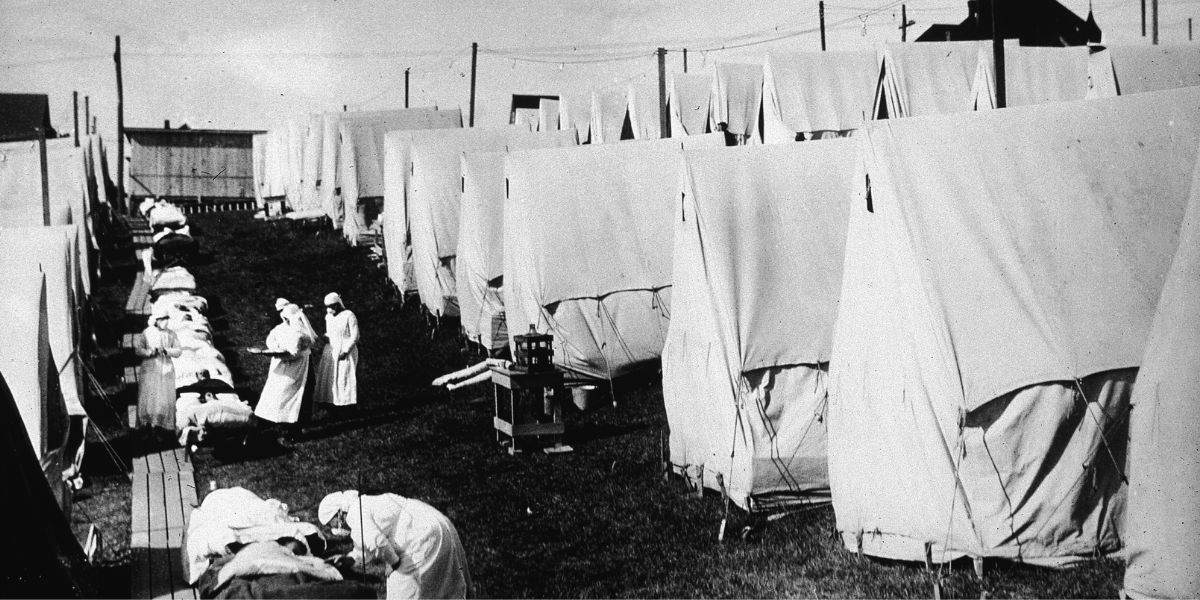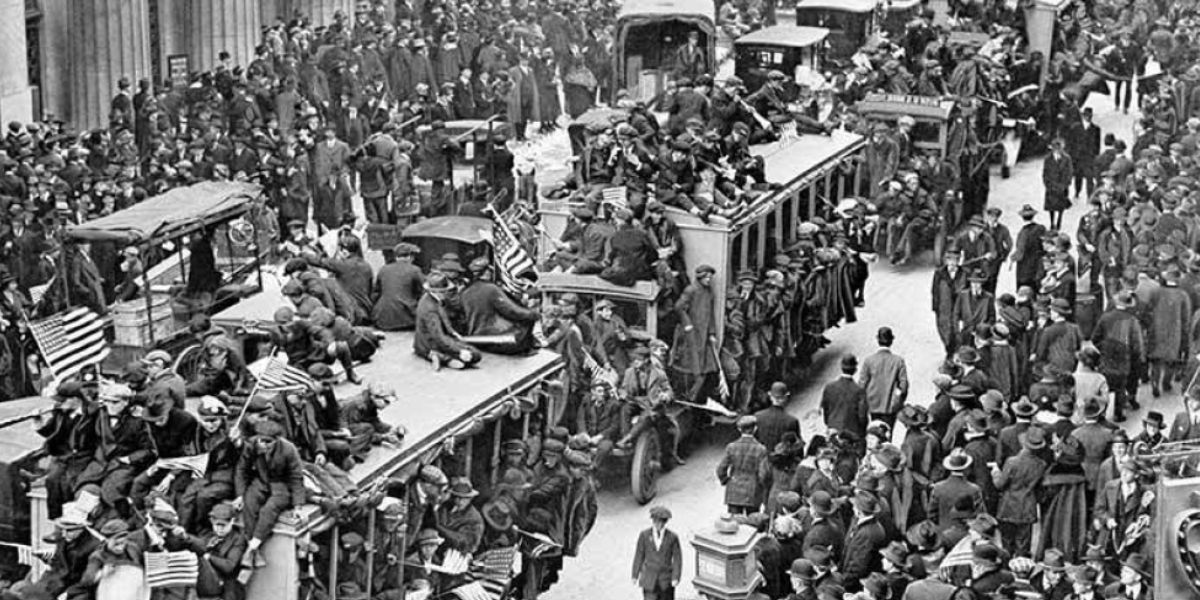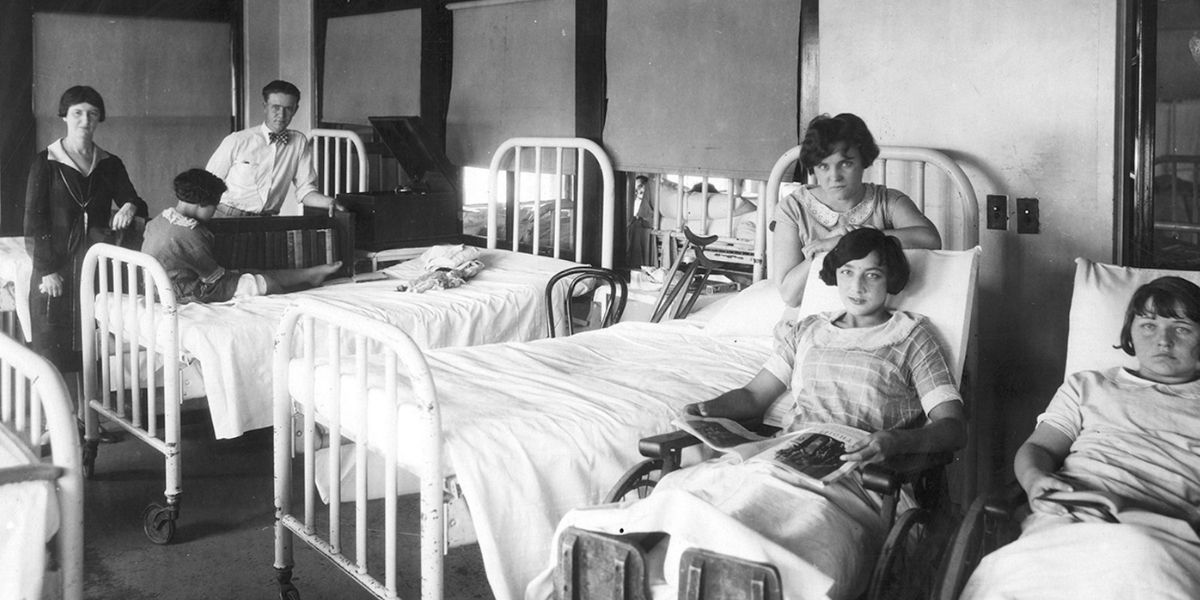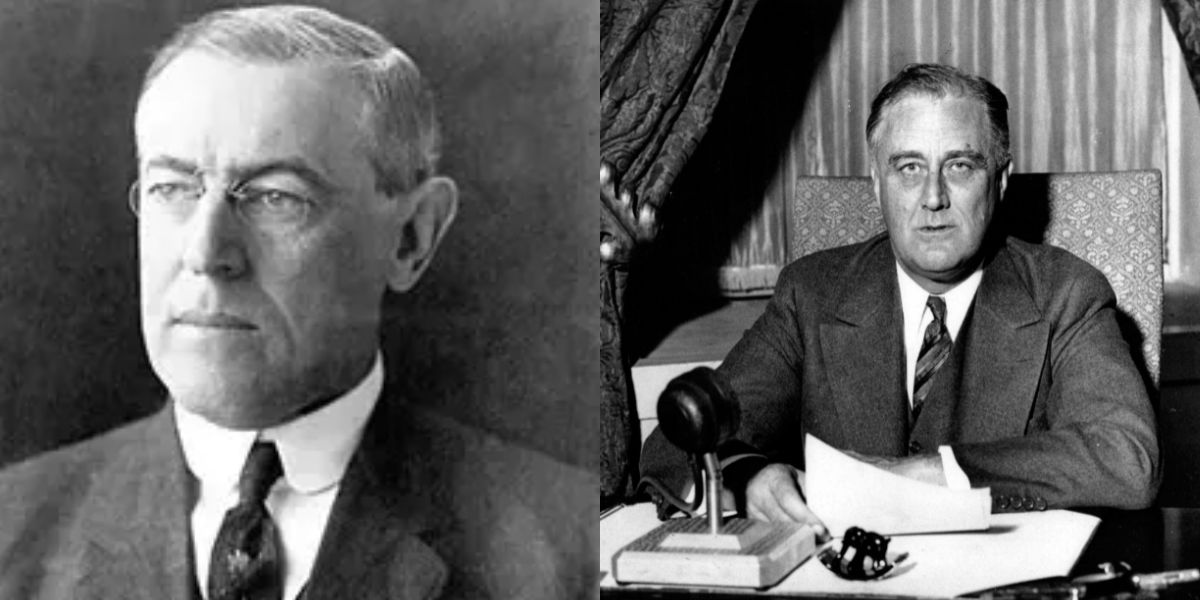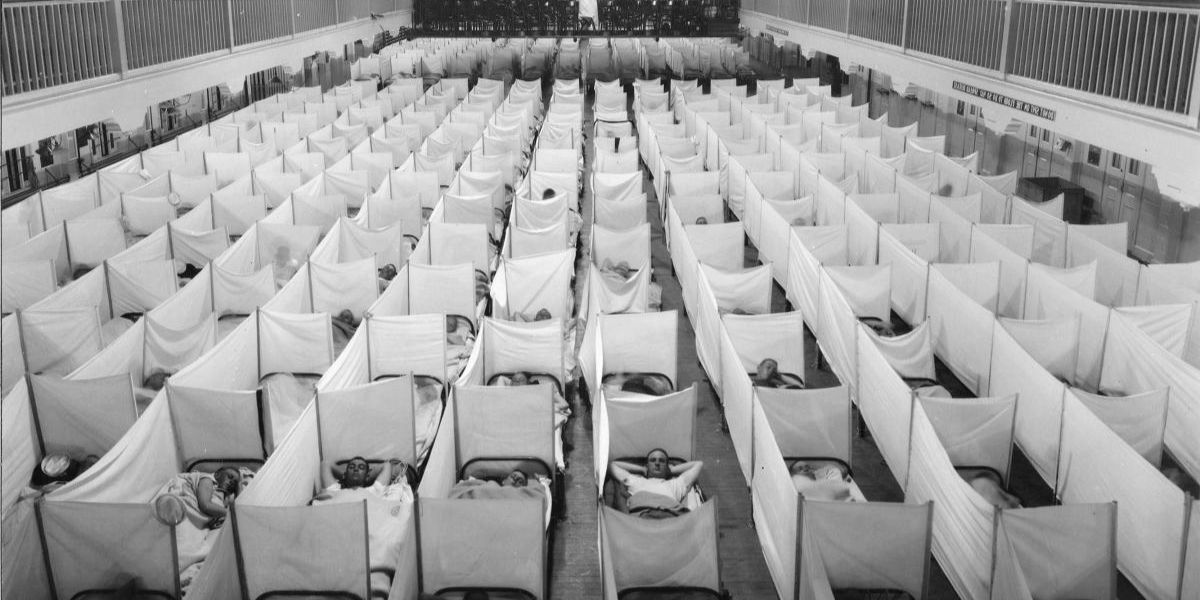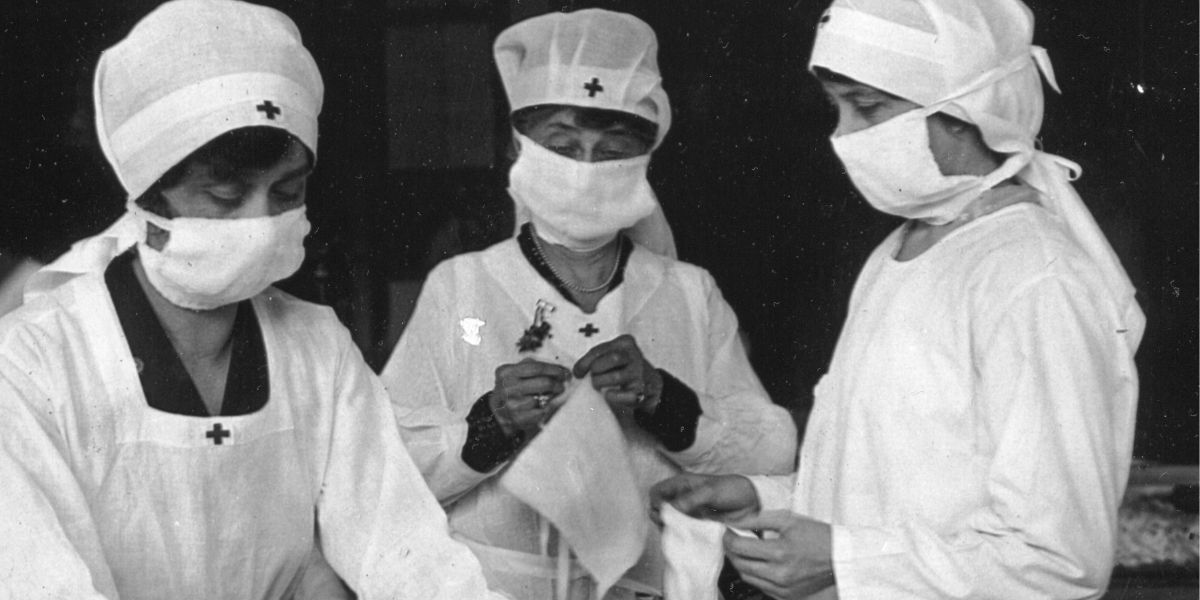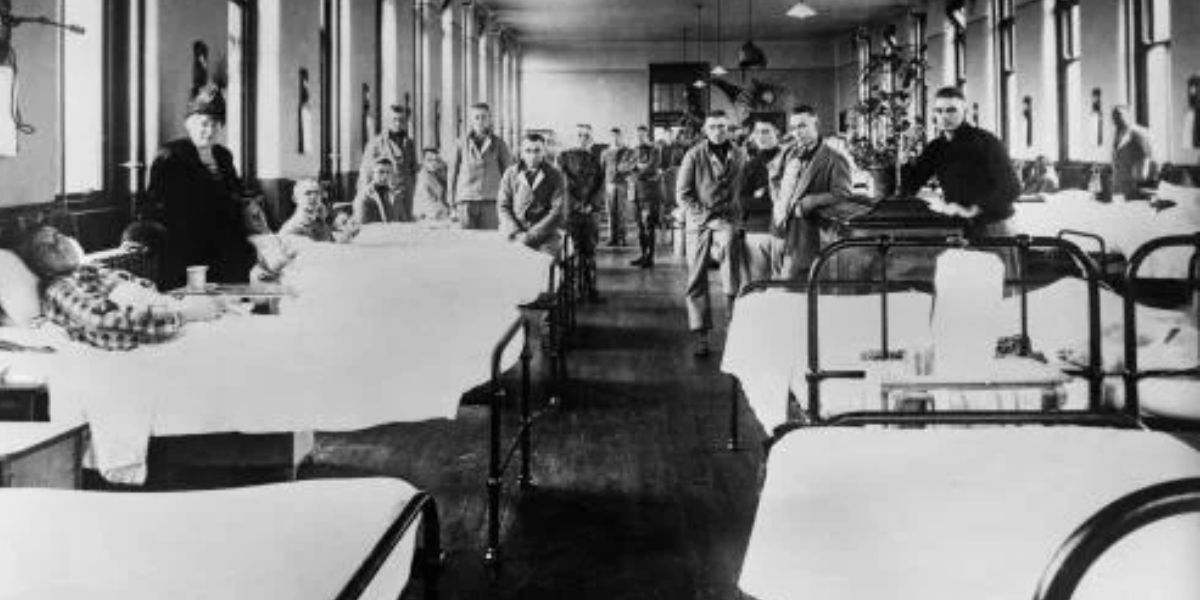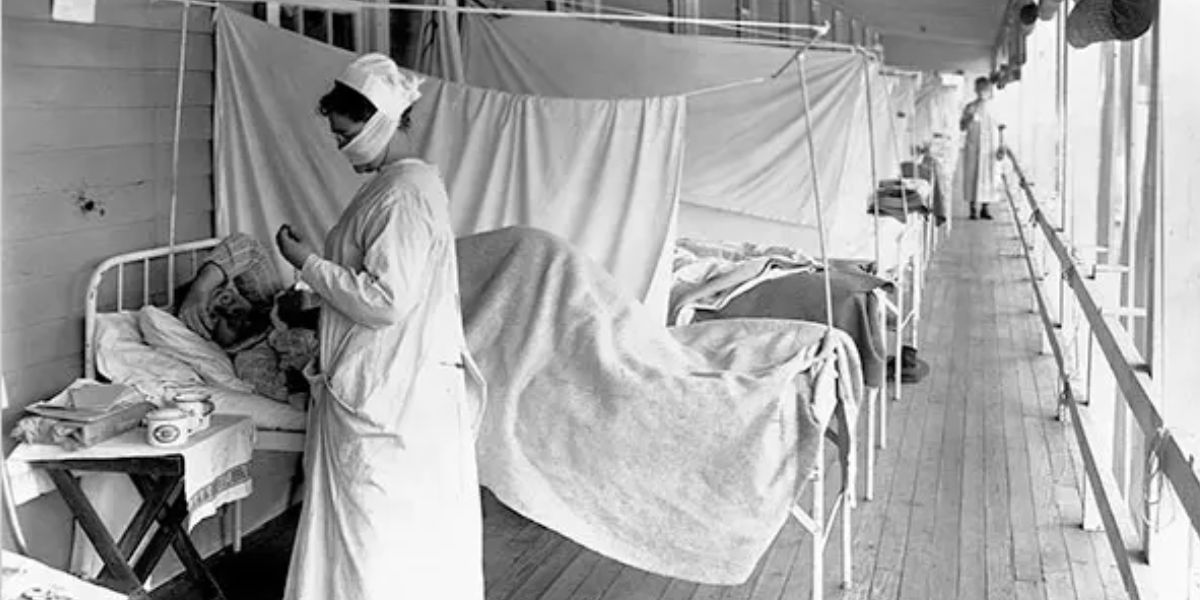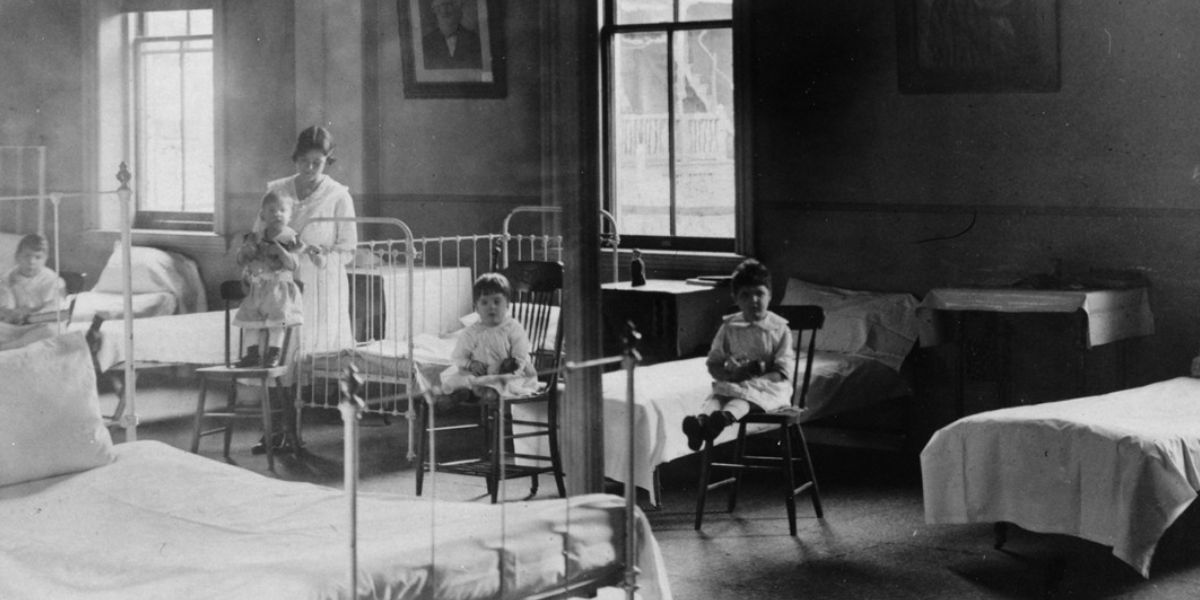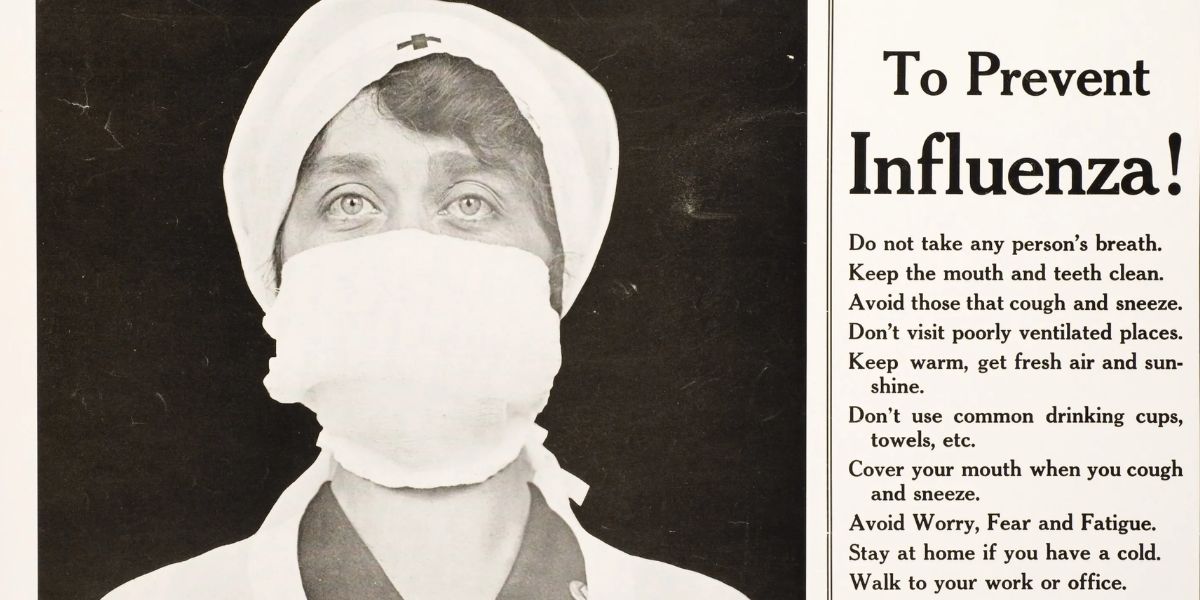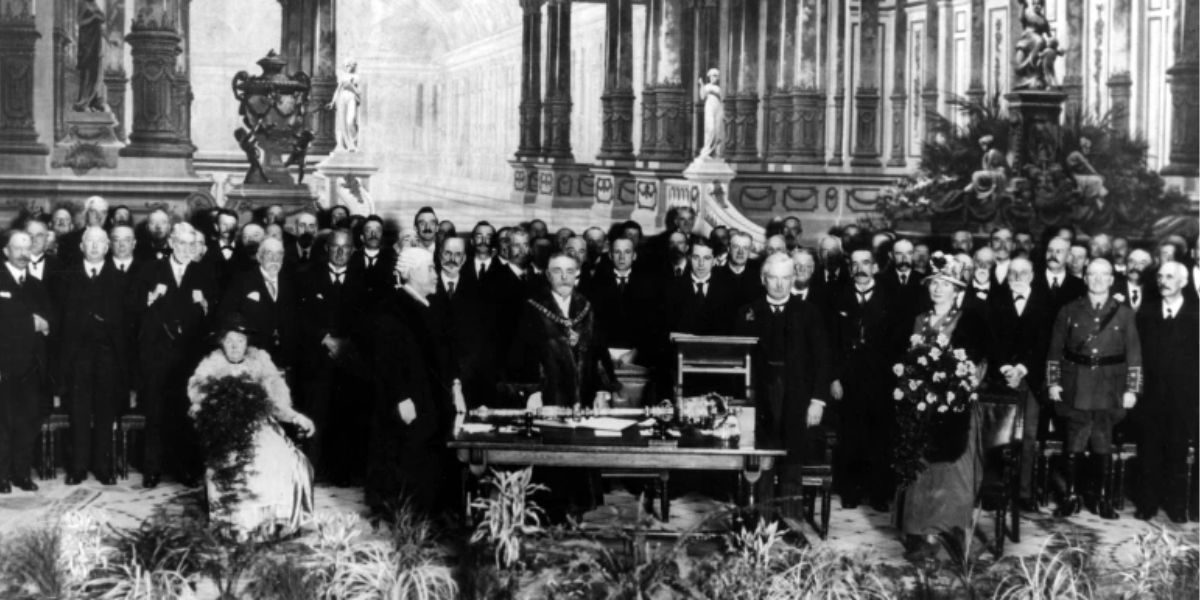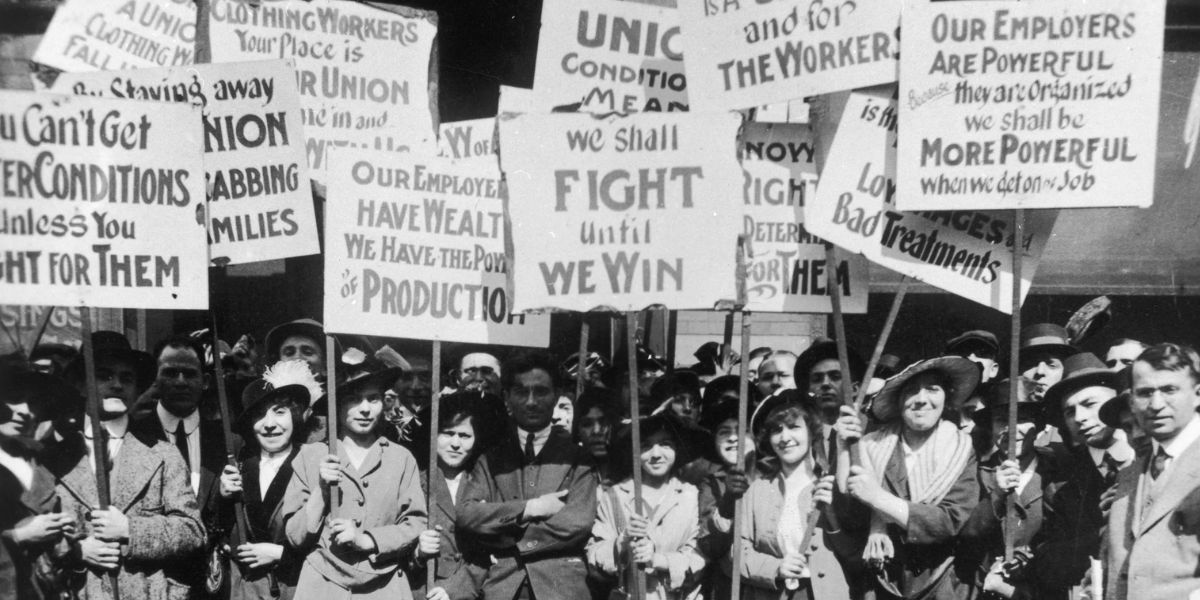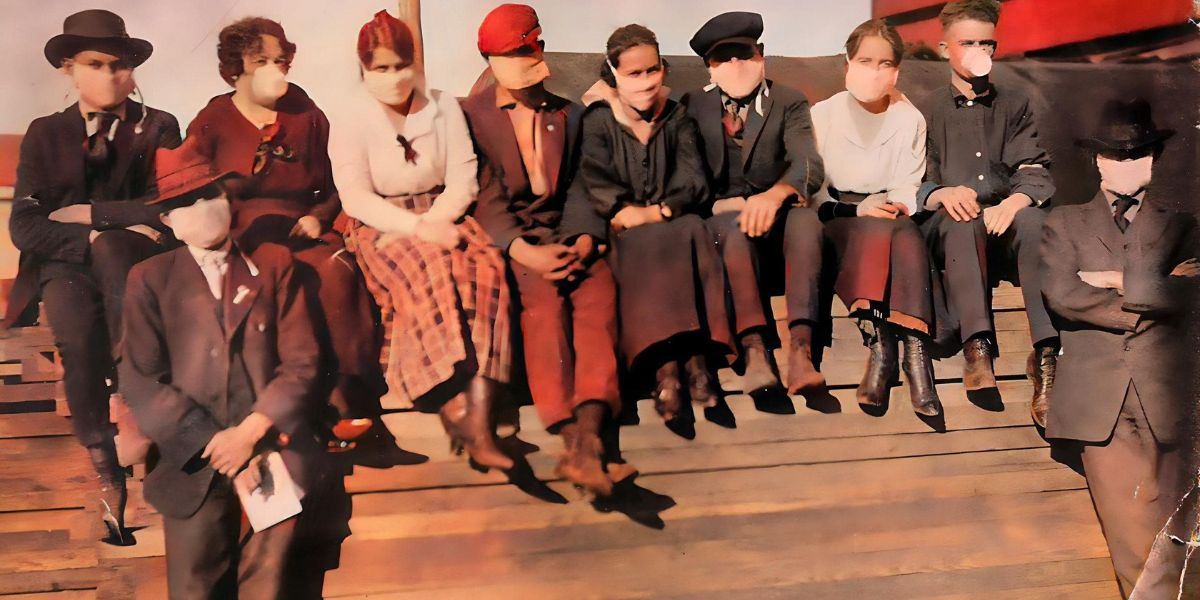Spanish Flu or 1918 Flu is also called “Forgotten Flu or Forgotten Pandemic” due to the little attention it receives today, despite being the deadliest pandemic of the 20th century. Let us remind you that this global catastrophe claimed an estimated 50-100 million lives- far greater than the causalities of the First World War.
Since then, several significant flu pandemics have affected nations worldwide, but none had the impact of the 1918 pandemic. Not only it had a huge impact on people’s lives but also influenced health practices and changed society’s approach to managing and preparing for future outbreaks.
Spanish Flu had little to do with Spain!
During the First World War in 1918 was causing brutal destruction, the unknown enemy started spreading rapidly through the U.S., Europe and even the trenches where soldiers were stationed. Since, Spain was neutral in the war, and was openly reporting on the virus while other countries hid the news, it was called Spanish Flu, even though it didn’t start there. Do you know in Spain, this was called French Flu, as they believed flu had come from France.
Spanish Flu was a powerful virus
The Spanish Flu was strong and deadly causing a large number of deaths (25 million in just first six months), which made people worry that this could lead to the end of humanity.
US Government hid the negative news
One of the major reasons for the rapid spread of the virus is the refusal of the US government’s to tell the truth about it. In 1918, as the First World War entered its fourth year, the government wanted to maintain morale, so they hid the negative news, including information about the virus. Also, then-president Wilson didn’t make any statements about the virus. To add to that, the surgeon general told the public not to worry, saying there was no cause for alarm.
Tragic toll in Philadelphia due to government secrecy
About 300 sailors returned to the Philadelphia Navy Yard in September 1918, and just within weeks, 600 sailors were hospitalised with flu. Although local physicians called for a quarantine, it didn’t happen as a military parade was scheduled, which the government thought would boast war bond sales. The parade was attended by about 200,000 people and just within three days, 117 people died from the virus. Within a week of parade, over 45,000 people were infected, and within six weeks, the death toll rose to 12,000.
A mystery disease
During those time, doctors didn’t yet understand viruses as they lacked the technology to see something so tiny. Because of this, they were unable to find ways to prevent or find the cure.
High mortality among infected people
Most people who were infected with the flu survived. Reportedly, less than 20 out of every 100 infected people died. However, some groups were affected more severely than others. In the U.S., several native Americans died due to the virus as they were not exposed to earlier strains of the virus. In some cases, whole Native communities were wiped out. Although less than 20 percent seem low, it is still more for the typical flu.
The flu had shocking symptoms because of which it had different names
The Spanish Flu caused extremely severe and shocking symptoms. Although early symptoms were mild, it struck extremely fast, killing people within days. The virus attacked people’s lungs and some people drowned in their own phlegm. Many coughed up blood and some spurted blood from ears and noses. People turned blue or purple as their bodies were deprived of oxygen. This discoloration often meant death was near. Because of this the Spanish Flu was called blue death or purple death.
Spanish Flu was unusual
The flu was unusual as it targeted young adults (even who had strong immune system), especially those aged 20-40, which is rare for influenza epidemic or pandemic. Scientists still don’t fully know why this age group was hit, although there are several theories about the same.
Scientists still don’t know when or where the flu originated
They also don’t know about its origin. Again, there are multiple origin theories, including Kansas (US), others point to the Western Front in Northern France and even China. There is also possibility that the virus began as early as 1916 but reached its peak in the final year (1918) of the First World War.
The First World War accelerated the rapid spread of the virus
The flu rapidly spread due to the movement of troops around the world. Within a year, the virus had already infected about 500 million people, which is a third of the world population and killed over 100 million people. India was one of the worst-hit countries, with an estimated 18-20 million deaths.
First world war & pandemic
Although World War I influenced the spread of the pandemic, it did not significantly change the outcome of the war, as both sides were equally impacted by the flu.
Desperate remedies
Since doctors were unable to find the cure of even prevent it, ordinary people tried their best to treat their friends and families. One of the most popular remedies was taking significant doses of alcohol, particularly whisky and brandy. Some of them even attempted treatments that included camphor, strychnine and quinine.
Impact of flu on global population
Although the average mortality rate was relatively low, which was between 2-5%, the virus was highly contagious, because of which it spread rapidly. In some places, such as Western Samoa, the impact was severe, with up to 90% of the population infected and nearly a quarter of those infected died.
The second wave was devastating
Just when people thought that the virus is gone, it resurged. The second wave was much more deadly and virulent strain. It spread like wildfire affecting a third or quarter of the population of the world, but was short lived, tapering off not long after, around 1920 or 1921.
The third wave
In 1919, the third wave hit the world, causing renewed outbreaks of flu. Actually, the third wave was more lethal than the first, but less than the second.
Immunity and virus mutation
People who were exposed to the earlier strains of the virus had some protection. Also, the virus changed over time and became less deadly. The deadly virus tends to kill its host quickly, which results in less spread. On the other hand, the less deadly strains can survive longer and infect people.
Woodrow Wilson & Franklin Delano Roosevelt were not spared by the virus
Woodrow Wilson, the then-president of the US, and Franklin Delano Roosevelt, the future president, were infected with the Spanish Flu. Woodrow fell ill while at the Paris Peace Conference in 1919, even his daughter Margaret and several staff members got sick. On the other hand, Franklin, the then assistant secretary of the Navy, fell sick while traveling to France on a ship- the USS Leviathan. However, he managed to recover after returning home.
Famous personalities who died of the virus
Former First Lady Rose Cleveland, actress Myrtle Gonzalez, baseball player Harry Glenn, Russian actress Vera Kholodnaya, silent film star Harold Lockwood, major league baseball player Larry Chappell and Mayor of Denver Robert W. Speer are some of the famous personalities who died from the Spanish Flu
The Death Toll of the Spanish Flu (one year) Equals That of AIDS in the U.S (over nearly 40 years)
In the United States alone, around 675,000 people died in a year due to Spanish Flu, which is the same number to the total deaths from AIDS in the US over almost 40 years.
The 1918 Flu was an H1N1 virus
The 1918 flu was H1N1 virus, which was similar to 2009 pandemic of swine flu, which in turn was the first new influenza pandemic in 41 years. However, the clinical features of 2009 virus was milder.
The American health system was overwhelmed
The American health system was overwhelmed, especially because the nurses were serving overseas during the war. There was a desperate need for more nurses as patients were more. Although there were trained black nurses were available, the Red Cross used untrained volunteers to help. Eventually, the hospital became so crowded that makeshift hospitals were set up in private homes, schools and other buildings.
Global collaboration
Countries worked together on health research to understand the virus better and fight against it. Scientists from different countries shared their findings, data and other details to get an idea about the virus.
Impact of virus- Long-term health issues
Several people who recovered from the Spanish Flu faced long-term health issues, especially those related to the respiratory system. Some experienced breathing difficulties, while others had reduced lung capacities and other complications, which impacted their daily lives and made it difficult for them to engage in regular activities or work.
Social distancing
The virus highlighted the importance of social distancing, an important strategy for preventing the spread of the disease. The concept became widely recognized during that time.
Disease prevention became a priority; From individual to community health priority
The flu transformed Canada, leading to the establishment of a federal health department. More than disease management, its prevention became a priority. People encouraged to view the illness as community problem rather than an individual one.
Public health measures
Although in several cities, strict health measures like quarantine, mask mandates and public gatherings were banned, in some places local officials ignored medical advice to prevent affecting morale.
Cultural impact
The pandemic inspired writers, artists and musicians to create work that showed sadness and anxiety that people felt during the flu outbreak.
Economic disruption
It also caused major economic problems, disrupting businesses and affecting workplace as many people got sick or were unable to work.
Research contributions
During that time, technology was not advanced, and people and doctors didn’t know much about viruses. However, the flu outbreak led to improvements in public health practices and preparedness for future outbreaks. Health officials learned from their experience, which directed attention toward health research and services, helped create stronger guidelines for controlling the virus and even resulted in increased funding for the healthcare system and research.
Estimates of death
The estimates of number of death due to the pandemic varied widely, which made it challenging to find the actual effect of the virus on people’s lives and health.
End of the pandemic
Although the pandemic began to decline in 1919, it had a huge and lasting impact on public health and society.
No universal vaccine for the flu yet
We still don’t have a universal vaccine for the flu. The reason for the same is that the influenza viruses mutate rapidly and vaccines can only protect against known strains. When a new strain emerges, scientists must work quickly to create a vaccine that is effective against it. The Spanish Flu reminds us that the global population is vulnerable to pandemic influenza and that we still face many challenges in keeping everyone safe from the flu.

